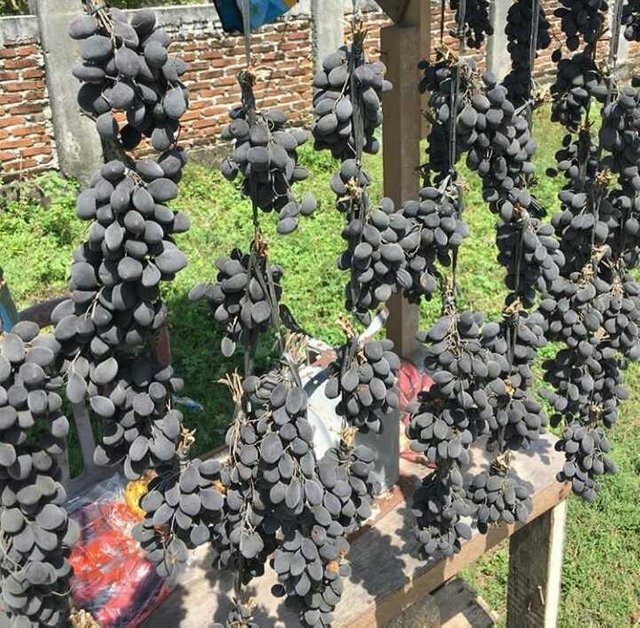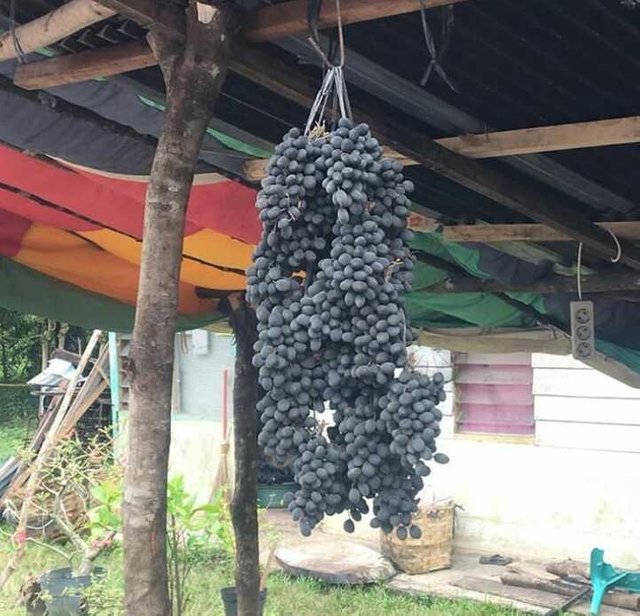starch from Kalimantan
Keranji acid known as velvet tamarind in English, refers to the soft flesh of a kind of brown velvet. The taste is similar to tamarind, sweet-sour. However, compared to tamarind, starch is sweeter, drier in texture, and soft fleshy. The chocolate velvet-like fruit enveloped the small seeds.

Although delicious to eat, keranji acid fruit is difficult to pick. The tree is large and can reach 35 meters high. To enjoy this fruit, it is usually scavenged between the dried leaves that fall.
Keranji acid is a tropical plant. This plant grows naturally in Thailand, Malaysia, and Indonesia, namely in Kalimantan, Java and Sumatra. The fruit is the size of a grape, hard and dense. The seeds resemble watermelon seeds. Some have two seeds. This is shiny, coated with a thin layer of starch.
In Thailand, quoting from the research of Othman Yaacob and Noparat Bamroongrugsa (1990) for the World Food Agency (FAO), fruit from plants called yee, or luk yee, is processed as snacks sold on the roadside, at kiosks in the bus terminal or even station.
First, fruit meat is processed in the form of pasta, mixed with sugar, chilli sauce, and salt, sold in plastic packaging. Second, keranji acid is removed from the outer skin mixed directly with sugar, or chili sauce, or other ingredients, directly offered depends on the seller's creativity , with a choice of spicy or sweet taste.
in Sarawak, Malaysia, there are two varieties sold on the local market. Both of them have thin, fragile black rind, and look dry naturally, unlike most fruits. The smaller type is 25 mm long and has meat Soft reddish-brown fruit wraps a single seed, with a small air space inside the shell of the fruit's skin. The flesh of the fruit tastes sweet and sour.
The second one is bigger, about 38 mm in length. The difference is with the small type, there is more empty space, seeds sometimes amount to two seeds, brown flesh and a little sticky.
At the local Kalimantan market, it is common to find keranji with brown skin and thinner, sweet honey starch, sweet taste, and black starch acid. This acid fruit is widely used as food acid. In Jakarta, keranji acid was often sold in schools as child snacks.
In addition to Thailand and Indonesia, keranji acid fruit is also very popular in Sierra Leone, Ghana and Nigeria in west Africa, and is known by the local name awin in Yoruba, icheku in Igbo, and tsamiyar kurm in Hausa.
The plants of the Leguminosae family, like quoting from Wikipedia, have a scientific name Indum Dialium, L., with the name synonym of Dialium cochinchinense, Pierre, Dialium javanicum, Burm.f., Dialium laurinum, Baker, Dialium marginatum, de Wit, and Dialium turbinatum , de Wit. The starchy acid in dry form has a powdery texture, like powder, orange, with a sharp taste.
in Indonesia, keranji acid is also known by various local names, namely kranji, asam cina, kuranji, ki pranji (Sunda), parangi, ceuradieh (Aceh).
The decoction of the bark is traditionally used to treat toothache. Also the bark decreases inflammation in the bronchial area. Leaf decoction is also used in the treatment of jaundice, regulating blood sugar levels by reducing sugar levels and intensifying insulin sensitivity to cure diabetes.
Analgesic properties of the fruit also help in eliminating menstrual pain, also help stop diarrhea. Half-aged leaves are traditionally used to heal wounds.
Summary of Functions and Benefits of Medicinal Plants Sidik Raharjo's writings published by Merapi Farma Herbal mention that these plant fruits have medicinal properties of thrush and bleeding gums.
Wood from keranji acid plants is of economic value because of its hard and dense nature, so it is suitable for building materials. Othman Yaacob and Noparat Bamroongrugsa's research in 1990 for the World Food Agency report, said keranji acid grows well in the tropics, especially in land with a good drainage system, even able to grow in nutrient-poor land.
Data on the cultivation of starch in Indonesia is very limited. There are no figures on the area of cultivation, except that keranji acid grows in the forests of West Kalimantan, along the upper Kapuas River, keranji acid is also traditionally grown in East Kalimantan and Central Kalimantan. However, it is now starting to be threatened with extinction due to the opening of oil palm lands that do not heed forest sustainability.
Similar to Indonesia, keranji acid is also not cultivated in Thailand. The harvest is constrained by its long growth period. People also prefer to cut the tree for valuable wood
